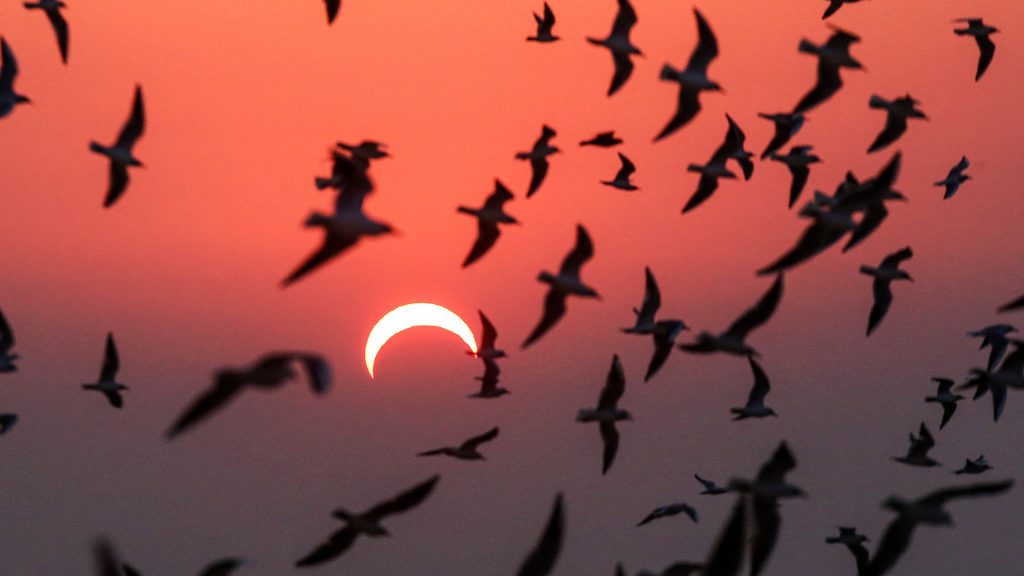On April 8, a celestial spectacle will captivate North America as the shadow of a total solar eclipse races across the continent. While skywatchers marvel at this rare event, researchers from the Cornell Lab of Ornithology and their collaborators will be embarking on a unique scientific endeavor—to investigate the impact of daytime darkness on the behavior of flying creatures, including birds, bats, and insects. With spring migration in full swing and most birds undertaking nocturnal flights, the solar eclipse presents an unparalleled opportunity to study how these animals respond to sudden changes in light levels.
The Significance of Light: Light serves as a fundamental cue for organisms across the planet, influencing various aspects of their lives, from navigation and foraging to reproductive behavior. Yet, manipulating light on a large scale for scientific study is challenging. Solar eclipses offer a natural experiment, providing researchers with a rare opportunity to observe how flying creatures adapt to temporary darkness.
Methodology: Utilizing U.S. weather radar stations positioned along the path of the eclipse, researchers will track airborne activity before, during, and after the event. By analyzing radar data, which isolates biological signals from weather events, the team aims to quantify the movement of birds, insects, and bats during the eclipse’s totality—a brief window of darkness lasting several minutes. Comparisons will be made with data collected at sunset to discern any notable shifts in behavior.
Anticipation and Expectations: The upcoming solar eclipse presents several differences from previous events, heightening anticipation among researchers. Unlike the 2017 eclipse, which was annular, this eclipse will be total, with the moon closer to Earth, prolonging the period of darkness. Additionally, the eclipse coincides with spring migration—a critical time for birds embarking on long-distance journeys to their breeding grounds. With more radar stations deployed and improved technology, researchers anticipate gaining deeper insights into how flying creatures respond to unexpected darkness.
Implications and Insights: Understanding how animals react to the solar eclipse offers valuable insights into their perception and utilization of light cues under normal conditions. By deciphering changes in behavior, researchers can glean information about navigation strategies, habitat selection, and physiological responses to environmental stimuli. Moreover, the findings from this study may have broader implications for conservation efforts and our understanding of how wildlife adapts to environmental changes.
As North America prepares to witness the celestial dance of a total solar eclipse, scientists stand ready to unlock the mysteries of nature’s twilight. Through innovative research and collaborative efforts, researchers from the Cornell Lab of Ornithology and beyond are poised to unravel the intricate relationship between light and life in the animal kingdom. As the shadow sweeps across the continent, it offers a fleeting glimpse into the hidden world of flying creatures—a world shaped by the ebb and flow of light and darkness.
